With new technologies revolutionizing data collection, wildlife researchers are becoming increasingly able to collect data at much higher volumes than ever before. Now we are facing the challenges of putting this information to use, bringing the science of big data into the conservation arena. With the help of machine learning tools, this area holds immense potential for conservation practices. The applications range from online trafficking alerts to species-specific early warning systems to efficient movement and biodiversity monitoring and beyond.
However, the process of building effective machine learning tools depends upon large amounts of standardized training data, and conservationists currently lack an established system for standardization. How to best develop such a system and incentivize data sharing are questions at the forefront of this work. There are currently multiple AI-based conservation initiatives, including Wildlife Insights and WildBook, that are pioneering applications on this front.
This group is the perfect place to ask all your AI-related questions, no matter your skill level or previous familiarity! You'll find resources, meet other members with similar questions and experts who can answer them, and engage in exciting collaborative opportunities together.
Just getting started with AI in conservation? Check out our introduction tutorial, How Do I Train My First Machine Learning Model? with Daniel Situnayake, and our Virtual Meetup on Big Data. If you're coming from the more technical side of AI/ML, Sara Beery runs an AI for Conservation slack channel that might be of interest. Message her for an invite.
Header Image: Dr Claire Burke / @CBurkeSci

Explore the Basics: AI
Understanding the possibilities for incorporating new technology into your work can feel overwhelming. With so many tools available, so many resources to keep up with, and so many innovative projects happening around the world and in our community, it's easy to lose sight of how and why these new technologies matter, and how they can be practically applied to your projects.
Machine learning has huge potential in conservation tech, and its applications are growing every day! But the tradeoff of that potential is a big learning curve - or so it seems to those starting out with this powerful tool!
To help you explore the potential of AI (and prepare for some of our upcoming AI-themed events!), we've compiled simple, key resources, conversations, and videos to highlight the possibilities:
Three Resources for Beginners:
- Everything I know about Machine Learning and Camera Traps, Dan Morris | Resource library, camera traps, machine learning
- Using Computer Vision to Protect Endangered Species, Kasim Rafiq | Machine learning, data analysis, big cats
- Resource: WildID | WildID
Three Forum Threads for Beginners:
- I made an open-source tool to help you sort camera trap images | Petar Gyurov, Camera Traps
- Batch / Automated Cloud Processing | Chris Nicolas, Acoustic Monitoring
- Looking for help with camera trapping for Jaguars: Software for species ID and database building | Carmina Gutierrez, AI for Conservation
Three Tutorials for Beginners:
- How do I get started using machine learning for my camera traps? | Sara Beery, Tech Tutors
- How do I train my first machine learning model? | Daniel Situnayake, Tech Tutors
- Big Data in Conservation | Dave Thau, Dan Morris, Sarah Davidson, Virtual Meetups
Want to know more about AI, or have your specific machine learning questions answered by experts in the WILDLABS community? Make sure you join the conversation in our AI for Conservation group!
News from a grant to explore potential projects for monitoring biodiversity in latin american countries
16 December 2023
SEE Shell is an innovative phone app that uses machine learning to identify products made from the shell of the critically endangered hawksbill sea turtle.
14 December 2023
Outstanding chance for a motivated and ambitious individual to enhance their current project support skills by engaging with a diverse array of exciting projects in the field of biodiversity science.
11 December 2023
The Wildlife Society features a new paper where TrailGuard cameras have been used with tigers
9 December 2023
Two-year postdoc in AI and remote sensing for citizen-science pollinator monitoring, at Aarhus University. The successful candidate will integrate our computational entomologist team to develop and deploy novel methods...
4 December 2023
Funding
With $60,000, $30,000, and $10,000 grants available for 14 outstanding projects, the support of engineering and technology talent from Arm (the leading semiconductor design company), and access to the world’s biggest...
1 December 2023
Join the Rainforest Connection & Arbimon team to develop software for biodiversity monitoring!
14 November 2023
Yale University & Map of Life Rapid Assessments - XPRIZE
8 November 2023
Yale University & Map of Life Rapid Assessments - XPRIZE
8 November 2023
Careers
The Institute for Bird Populations (IBP) seeks a California-based acoustic monitoring specialist to collect, manage, and process avian acoustic data from multiple research and conservation projects across California...
26 October 2023
Join the NightLife team where you'll blend entomology expertise with technological innovation using automated insect monitoring.
25 October 2023
Have you created a successful career in tech and are ready to do something good with your skills and experience? If yes, then join Open Earth's Earthshot mission to build open source digital systems and solutions to...
25 October 2023
April 2024
event
May 2024
September 2024
event
October 2024
April 2024
event
March 2024
event
February 2024
December 2023
Navigating AI and good governance for INGOs
23 April 2024 10:27am
Program Manager: Integrating movement and camera trap data with international conservation policy
22 April 2024 10:16pm
ChatGPT for conservation
16 January 2023 10:04am
12 February 2024 1:05pm
You can already achieve both of them with your prompt.
Or, if you're not using ChatGPT specifically but another LLM that you can fine tune, you can use RAG or fine tuning to extra train the algorithm on the data you want it to extract information from.
With ChatGPT you can create your custom GPT now.
22 April 2024 10:15pm
In an earlier post in this discussion, I wondered how the funders are responding. Today, I stumbled on the following Request for Expressions of Interest for short term consultancy with the title 'Development of a Scoping Study on the use of AI in Evaluations for AF-TERG, CIFs E&L Initiative and GEF IEO, GCF IEU' ( My stress ) on the website of the Adaptation Fund. It's a huge fund ( USD 1 Billion ), so probably bogged down in bureaucracy and probably not the fastest to respond to new developments.
Here is the link to the EoI
Postdoc: Biologging & Camera Trap Data Integration
22 April 2024 10:10pm
Drop-deployed HydroMoth
2 April 2024 10:20am
5 April 2024 2:04pm
Hi Sol! This seems like an awesome project! I have a few questions in response: Where were you thinking of deploying this payload and for how long?
Regarding hydromoth recorders, there have been several concerns that have popped up in my work with deploying the them at this depth because it's a contact type hydrophone which means it utilizes the case to transmit the sound vibrations of the marine soundscape to the microphone unlike the piezo element based hydrophones.
- At 30-60m you will likely have the case leak after an extended period of time if not immediately. The O-ring will deform at this depth, especially around the hinge of the housing. The square prism shape is not ideal for deep deployments you describe.
- After that depth and really starting at about 50m, a major concern is synthetic implosion from the small air pocket of the hydromoth not having a pressure release valve and lithium ion batteries getting exposed to salt water. This type of reaction would cause your other instruments to probably break or fail as well.
- You are unlikely to get a signal with a reinforced enclosure. The signal is generated via the material and geometry of the housing. The plastic will probably deform and mess with your frequency response and sound to noise ratio. If you place it against metal, it will dampen the sound quite a lot. We tried to do this, but the sensitivity is quite low with a large amount of self noise.
A side note: for biodiversity assessments, the hydromoth is not characterized and is highly directional, so you wouldn't be able to compare sites through your standard aocustic indices like ACI and SPL.
That said if you are deploying for a short time, a hydrophone like an Aquarian H1a attached through a penetrator of a blue robotics housing that contains a field recorder like a zoom recorder may be optimal for half a day and be relatively cheaper than some of the other options. You could also add another battery pack in parrallel for a longer duration.
15 April 2024 6:53am
Hi Matthew,
Thanks for your advice, this is really helpful!
I'm planning to use it in a seagrass meadow survey for a series of ~20 drops/sites to around 30 m, recording for around 10 minutes each time, in Cornwall, UK.
At this stage I reckon we won't exceed 30 m, but based on your advice, I think this sounds like not the best setup for the surveys we want to try.
We will try the Aquarian H1a, attached to the Zoom H1e unit, through a PVC case. This is what Aquarian recommended to me when I contacted them too.
Thanks for the advice, to be honest the software component is what I was most interested in when it came to the AudioMoth- is there any other open source software you would recommend for this?
Best wishes,
Sol
21 April 2024 7:10pm
Hey Sol,
No problem at all. Depending on your configuration, the Audiomoth software would have to work on a PCB with an ESP32 chip which is the unit on the audiomoth/hydromoth, so you would have to make a PCB centered around this chip. You could mimic the functionality of the audiomoth software on another chip, like on a raspberry pi with python's pyaudio library for example. The problem you would have is that the H1A requires phantom power, so it's not plug and play. I'm not too aware with the H1e, but maybe you can control the microphone through the recorder that is programmable through activations by the RPi (not that this is the most efficient MCU for this application, but it is user friendly). A simpler solution might be to just record continuously and play a sound or take notes of when your 10 min deployment starts. I think it should last you >6 hours with a set of lithium energizer batteries. You may want to think about putting a penetrator on the PVC housing for a push button or switch to start when you deploy. They make a few waterproof options.
Just somethign else that occured to me, but if you're dropping these systems, you'll want to ensure that the system isn't wobbling in the seagrass as that will probably be all you will hear on the recordings, especially if you plan to deploy shallower. For my studies in Curacao, we aim to be 5lbs negative, but this all depends on your current and surface action. You might also want to think about the time of day you're recording biodiversity in general. I may suggest recording the site for a bit (a couple days or a week) prior to your study to see what you should account for (e.g. tide flow/current/anthropogenic disturbance) and determine diel patterning of vocalizations you are aiming to collect if subsampling at 10 minutes.
Cheers,
Matt
WILDLABS AWARDS 2024 - No-code custom AI for camera trap species classification
5 April 2024 7:00pm
10 April 2024 3:55am
Happy to explain for sure. By Timelapse I mean images taken every 15 minutes, and sometimes the same seals (anywhere from 1 to 70 individuals) were in the image for many consecutive images.
17 April 2024 5:53pm
Got it. We should definitely be able to handle those images. That said, if you're just looking for counts, then I'd recommend running Megadetector which is an object detection model and outputs a bounding box around each animal.
21 April 2024 5:19pm
Hi, this is pretty interesting to me. I plan to fly a drone over wild areas and look for invasive species incursions. So feral hogs are especially bad, but in the Everglades there is a big invasion of huge snakes. In various areas there are big herds of wild horses that will eat themselves out of habitat also, just to name a few examples. Actually the data would probably be useful in looking for invasive weeds, that is not my focus but the government of Canada is thinking about it.
Does your research focus on photos, or can you analyze LIDAR? I don't really know what emitters are available to fly over an area, or which beam type would be best for each animal type. I know that some drones carry a LIDAR besides a camera for example. Maybe a thermal camera would be best to fly at night.
Has anyone combined flying drone surveys with AI for counting wild herds?
14 April 2024 3:40pm
14 April 2024 6:33pm
Hi Johnathan!
Here are a few examples where UAVs and AI has been used to spot animals.
https://besjournals.onlinelibrary.wiley.com/doi/full/10.1111/1365-2656.13904
A google scholar search as this will find many more:
One thing often forgotten when considering UAVs for aerial surveys like these are that maximum height above ground is normally about 100-120m. This really limits the area one can cover.
Cheers,
Lars
21 April 2024 4:56pm
That was one of the things I was wondering about, the height that it can resolve animals at. At some resolution it must be able to tell different animals apart.
My application is for invasive herds, or uncontrolled large animal herds such as wild horses or urban deer. In phase 2 we apply contraceptives to them to humanely reduce numbers.
4th International workshop on vocal interactivity in-and-between humans, animals, and robots
19 April 2024 3:03pm
Mass Detection of Wildlife Snares Using Airborne Synthetic Radar
7 January 2024 6:50am
19 April 2024 8:40am
Sorry, been busy and only saw this message now. Definitely am interested you can WhatsApp me 072 4725318
19 April 2024 1:22pm
I appreciate the technology, especially considering the ongoing issue of snaring. I'm intrigued to see how it will be adapted to function effectively in the dense, closed canopy rainforest, where poachers often deploy nylon snares. Please let me aware incase it will operate in this environment and the nature of the snares. More chats, +255765526628
19 April 2024 1:52pm
In my experience, the preference for trapping animals using different types of snares varies depending on factors such as traditional customs, geographical location, availability and accessibility of materials, terrain, ease of transporting materials, and the type of animal targeted, ranging from buffaloes to medium or small-sized antelope. Based on my experience working in open woodland savannah protected areas (where poachers prefer using wired snares to hunt big game and even small game) and in closed canopy rainforests (where poachers prefer using nylon snares to hunt medium to small-sized antelope). It would be great if the technology will be modified to be capable of detecting both types of snares.
WILDLABS AWARDS 2024 – MothBox
15 April 2024 5:06am
18 April 2024 10:39am
Already an update from @hikinghack:
19 April 2024 12:00pm
Yeah we got it about as bare bones as possible for this level of photo resolution and duration in the field. The main costs right now are:
Pi- $80
Pijuice -$75
Battery - $85
64mp Camera - $60
which lands us at $300 already. But we might be able to eliminate that pijuice and have fewer moving parts, and cut 1/4 of our costs! Compared to something like just a single logitech brio camera that sells for $200 and only gets us like 16mp, we are able to make this thing as cheap as we could figure out! :)

19 April 2024 12:54pm
Gotcha, well I look forward to seeing future iterations and following along with your progress!!
Early Warning Systems for Human-Wildlife Conflict, Zoonotic Spillover, and Other Conservation Challenges
17 April 2024 5:43pm
Faces, Flukes, Fins and Flanks: How multispecies re-ID models are transforming Wild Me's work
17 April 2024 11:10am
Pytorch-Wildlife: A Collaborative Deep Learning Framework for Conservation (v1.0)
21 February 2024 10:30pm
26 February 2024 7:38pm
Hello @hjayanto , You are precisely the kind of collaborator we are looking to work with closely to enhance the user-friendliness of Pytorch-Wildlife in our upcoming updates. Please feel free to send us any feedbacks either through the Github issue or here! We aim to make Pytorch-Wildlife more accessible to individuals with limited to no engineering experience. Currently, we have a Huggingface demo UI (https://huggingface.co/spaces/AndresHdzC/pytorch-wildlife) to showcase the existing functionalities in Pytorch-Wildlife. Please let us know if you encounter any issues while using the demo. We are also in the process of preparing a tutorial for those interested in Pytorch-Wildlife. We will keep you updated on this!
26 February 2024 11:58pm
This is great, thank you so much @zhongqimiao ! I will check it out and looking forward for the upcoming tutorial!
17 April 2024 11:07am
Hi everyone! @zhongqimiao was kind enough to join Variety Hour last month to talk more about Pytorch-Wildlife, so the recording might be of interest to folks in this thread. Catch up here:
WILDLABS AWARDS 2024 - BumbleBuzz: automatic recognition of bumblebee species and behaviour from their buzzing sounds
12 April 2024 8:37am
12 April 2024 8:41pm
Super great to see that there will be more work on insect ecoacoustics! So prevalent in practically every soundscape, but so often over-looked. Can't wait to follow this project as it develops!
17 April 2024 10:23am
Thanks Carly! I will keep anyone interested in this project posted on this platform. Cheers
Join the Seeed Vision Challenge and Explore Conservation Tech!
10 April 2024 9:15am
WILDLABS AWARDS 2024 - Enhancing Pollinator Conservation through Deep NeuralNetwork Development
7 April 2024 5:55pm
Job Opportunity - Wildlife Protection Solutions
5 April 2024 9:22pm
Completely irrational animals...
3 April 2024 7:13pm
3 April 2024 9:09pm
3 April 2024 9:20pm
4 April 2024 5:05am
Rescuers hope AI will help reunite orphaned whale with its family in B.C.
3 April 2024 4:43pm
Finwave, while currently in beta-testing, is being used to help reunite an orphaned whale with its family.
EcoAssist - Free AI models for camera traps photos identification
3 April 2024 7:16am
ibm-nasa-geospatial (IBM NASA Geospatial)
28 March 2024 9:22am
NASA and IBM have teamed up to create an AI Foundation Model for Earth Observations, using large-scale satellite and remote sensing data, including the Harmonized Landsat and Sentinel-2 (HLS) data.
Applying Open-Source AI to Camera Trap Imagery
27 March 2024 4:34pm
AI for Conservation!
4 March 2024 8:51pm
22 March 2024 12:29pm
Welcome, Have you considered participating in any of the AI for Good challenges. I find it is good way to build a nice portfolio of work. Also contributing to existing open source ML projects such as megadetector or to upstream libraries such as PyTorch is good way to getting hired.
22 March 2024 5:57pm
Thank you for the tip! I'll definitely consider contributing to open source projects and taking part in challenges :)
25 March 2024 5:22am
We could always use more contributors in open source projects. In most open source companies Red Hat, Anaconda, Red Hat and Mozilla, people often ended up getting hired largely due to their contributions on open source projects. These contributions were both technical such as writing computer code and non-technical such as writing documentation and translating tools in their local language.
The Variety Hour: 2024 Lineup
22 March 2024 4:30pm
Catch up with The Variety Hour: March 2024
21 March 2024 7:39pm
21 March 2024 9:48pm
30 March 2024 3:08pm
31 March 2024 12:43pm
SLN Webinar: Tech for wildlife: The role AI and technology can play in nature conservation
18 March 2024 9:17am
BirdWeather | PUC
27 October 2023 7:45pm
2 November 2023 9:20pm
I love the live-stream pin feature!
14 March 2024 10:29pm
Hi Tim, I just discovered your great little device and about to use it for the first time this weekend. Would love to be directly in touch since we are testing it out as an option to recommend to our clients :) Love that it includes Australian birds! Cheers Debbie
16 March 2024 10:47pm
Hi @timbirdweather I've now got them up and running and winding how I can provide feedback on species ID to improve the accuracy over time. It would be really powerful to have a confirmation capability when looking at the soundscape options to confirm which of the potential species it actually is or confirm it is neither to help develop the algorithms.
Also, is it possible to connect the PUC to a mobile hotspot to gather data for device that isn't close to wifi? And have it so that it can detect either wifi or hotspot when in range? Thanks!
Data Manager and Technology Coordinator, ABC Global Climate Center
15 March 2024 5:01pm



















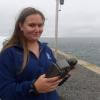


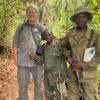
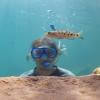

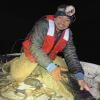





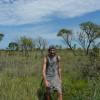





4 February 2024 5:39pm
Just so you know, I uploaded both a photo without a cat and one with a cat in the picture and ask if there was a cat in the picture it got it correct both times.
Uploading pictures to wildlabs doesn't seem to work at this time, so I can't show you the response, but the second answer with the cat in the picture it answered with:
"Yes, there is a cat in this picture. It appears to be in the middle of the driveway."